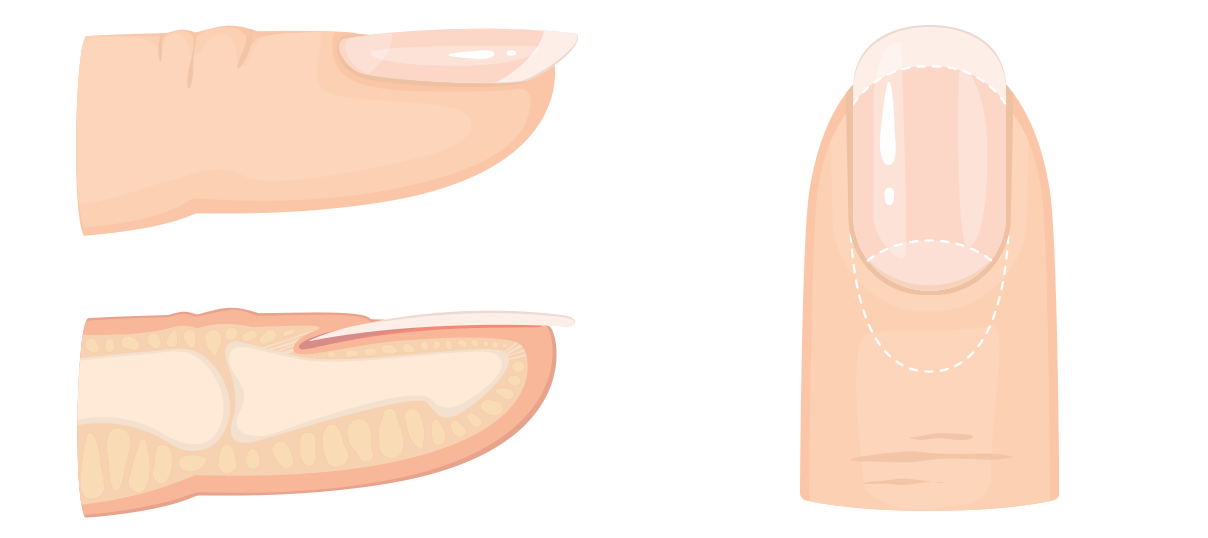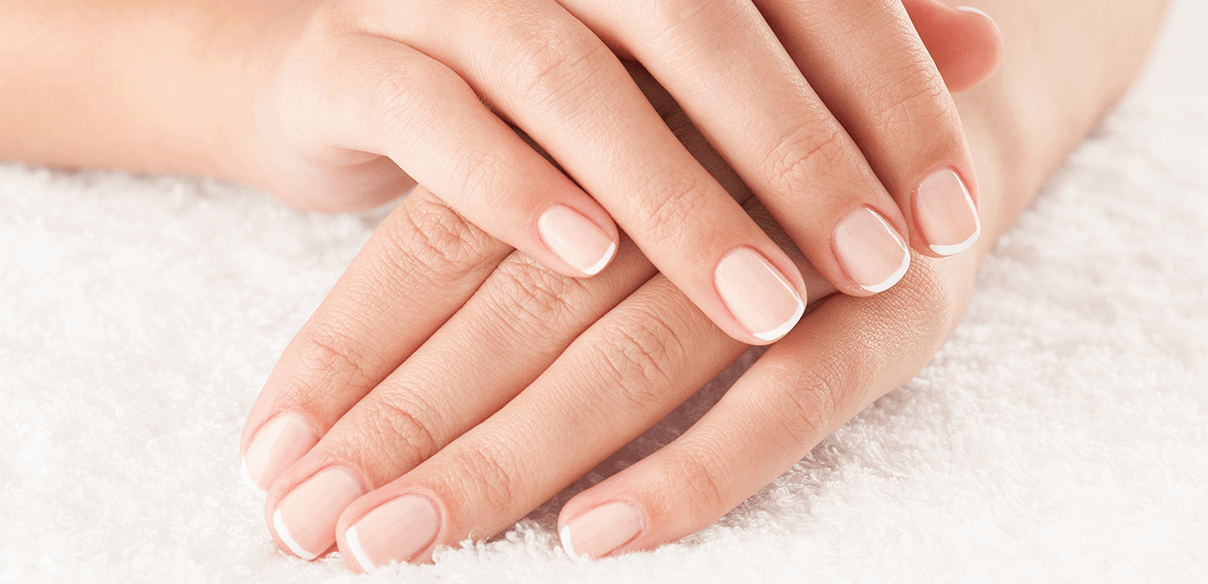Understanding nails
Our nails are composed of 90% hard keratin and constantly renew themselves from their matrix, located under the skin. Their growth is naturally slow, but varies according to age, the condition of the matrix, and our overall health.

NAIL STRUCTURE
Like our hair and body hair, the nails are skin appendages, a term which describes all skin-associated structures composed mainly of keratin. They consist of different parts:
- • The nail plate is a semi-transparent, convex-shaped strip. Made up of several layers of hard keratin, it protects the fingertip. It is generally pale pink, but can become whitish, yellowish, or bluish depending on the temperature outside or as a result of certain medical conditions.
•The lunula is the whitish crescent-shaped mark that is visible at the base of the nail, especially on thumbs.
- • The cuticle is a small piece of skin that more or less covers the base of the nail and protects it. It can sometimes cover the lunula.
• The nail bed is the layer of skin on which the nail plate sits and to which it is attached.
• The free margin is the extremity of the nail that extends beyond the finger and is not attached to the nail bed.
• The root lies under the skin at the base of the nail.
• The matrix, located beneath the root, is the living part of the nail: this is where new cells (keratinocytes) are produced. When the matrix is damaged, the nail grows irregularly (discoloration, ridges, deformation), either temporarily or permanently depending on the extent of the damage.

Nail growth
Nails grow from the matrix: the nail gradually renews itself from its base to its free margin. New keratinocytes are produced constantly in the basal layer of the matrix’s epidermis, and they gradually migrate towards the surface, becoming flatter and harder as they do so. Little by little, they push the oldest cells towards the nail’s free margin. Unlike the skin, the nail does not spontaneously shed its own dead cells: these disappear only when we trim or file our nails.
Nail growth is therefore continuous, like that of body hairs and hair, but it is slow: our nails grow approximately 3 mm per month. Three to six months are necessary to completely renew a hand nail, and 12 to 18 months are required for a toe nail.
This is the average rate for a healthy adult. In children, it happens slightly faster, but the nails are softer and more fragile. In the elderly on the other hand, growth slows down and the nails become dull, dry and brittle.



